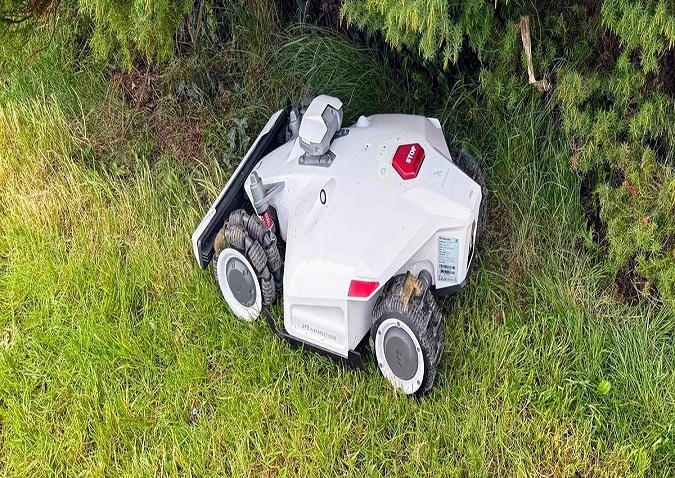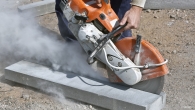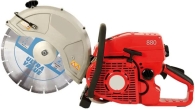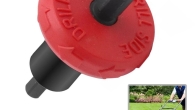
What Causes A Lawnmower to Surge: Eliminate the Frustration
Understanding Lawnmower Surging
To effectively tackle the issue of a lawnmower surging, it’s crucial to understand what surging actually is. Surging refers to a condition where a lawnmower engine repeatedly revs up and down, seemingly on its own. This inconsistency in engine performance can leave your lawn looking uneven. It can also signal that your mower is at risk for greater damage if not addressed. Knowing what causes a lawnmower to surge is the first step to fixing the problem. Generally, surging indicates an irregular supply of fuel and air to the engine or issues with the engine’s components. It’s a common problem, but one that can often be fixed with some basic troubleshooting steps. The following sections will delve deeper into the common causes and provide you with solutions to get your lawnmower running smoothly again.
 Common Causes of Lawnmower Surging
Common Causes of Lawnmower Surging
Understanding what causes a lawnmower to surge is vital. Surging often indicates the engine is not getting a steady flow of fuel and air. Let’s look at the common issues that lead to this problem.
Dirty or Clogged Carburetor
A carburetor mixes air and fuel for the engine. A dirty carburetor can disrupt this mix. It may cause too much or too little fuel to enter the engine, leading to surging. Regular cleaning can prevent this issue.
Faulty Spark Plug
The spark plug ignites the fuel in the engine. If it’s faulty or dirty, it may not produce a consistent spark. This inconsistency can lead to engine surging. Check and replace the spark plug if needed.
Dirty Air Filter
Air filters keep debris from entering the engine. A dirty filter restricts airflow, making the fuel mix too rich. This imbalance can cause the engine to surge. Clean or replace the air filter for a quick fix.
Old or Contaminated Fuel
Fuel can degrade over time or become contaminated. Old or dirty fuel can clog the fuel system. This can lead to an uneven fuel supply and result in surging. Use fresh, clean fuel for optimal performance.
Diagnostic Steps to Identify Surging Problems
Before you can fix a surging lawnmower, you need to find the root cause. Here’s a step-by-step guide to diagnose the problem:
- Check the Carburetor. Examine it for dirt or clogs. It’s often the source of trouble when it comes to surging issues.
- Inspect the Spark Plug. Look for signs of wear or damage. A failing spark plug could lead to inconsistent engine performance.
- Examine the Air Filter. Make sure it’s clean and free of debris. A clogged air filter can restrict the airflow and cause surging.
- Evaluate the Fuel Quality. Ensure that the fuel is fresh and not contaminated. Stale or dirty fuel is a common culprit in surging problems.
By systematically going through these steps, you’ll be able to pinpoint what causes a lawnmower to surge. Addressing each of these components one at a time will help rule out potential issues until you find the actual cause. Once you identify the problematic part, you can move on to the solutions to fix the lawnmower surging.
Solutions to Fix Lawnmower Surging
Once you understand what causes a lawnmower to surge, fixing the issue becomes much clearer. Here are the straightforward solutions to address each potential cause:
Cleaning the Carburetor
A dirty carburetor can throw off the fuel-air mix. To fix surging:
- Turn off the mower and let it cool.
- Remove the carburetor.
- Clean it with carburetor cleaner.
- Use a soft brush to gently remove debris.
- Reassemble and test the mower.
Replacing the Spark Plug
A faulty spark plug can lead to inconsistent engine performance. To replace the spark plug:
- Disconnect the spark plug wire.
- Use a spark plug socket to remove it.
- Install a new spark plug.
- Reconnect the plug wire.
Changing the Air Filter
A clogged air filter may cause a rich fuel mixture. To change the air filter:
- Locate the air filter housing.
- Remove the old air filter.
- Insert a clean filter.
- Secure the housing back in place.
Refreshing the Fuel System
Old or contaminated fuel is bad for the engine. To refresh the fuel system:
- Drain old fuel from the tank.
- Fill up with fresh, clean gasoline.
- Consider adding a fuel stabilizer for longer shelf life.
By tackling each of these solutions, your lawnmower’s surging issue should be resolved, resulting in a smoother running engine and a beautifully maintained lawn.
 Preventative Maintenance to Avoid Future Surging
Preventative Maintenance to Avoid Future Surging
To avoid future issues with your lawnmower surging, consider regular preventative maintenance.
Adopt a Regular Cleaning Routine
Frequent cleaning of your lawnmower is crucial. Make sure to:
- Clean the deck and undercarriage from grass clippings.
- Brush off any dirt or residue on the mower’s exterior.
- Wipe down surfaces to prevent rust and wear.
Schedule Consistent Carburetor Care
The carburetor is key to a smooth running engine:
- At least once a season, give it a thorough cleaning.
- Check for any build-up or clogs and clear them promptly.
Regularly Replace the Spark Plug
Old spark plugs can cause surging. Stay on top of replacements:
- Swap out the spark plug annually, or as needed.
- Do this to guarantee a strong and consistent spark.
Keep the Air Filter Clean
Air flow is vital to engine health:
- Change or clean air filters every few months.
- This ensures a proper fuel-air mix and prevents surging.
Use Fresh Fuel and a Stabilizer
Fuel quality affects engine performance:
- Never let fuel sit in the tank for long periods.
- Add a fuel stabilizer to extend the life of stored fuel.
By following these preventative measures regularly, you can help prevent the recurrence of surging and maintain your lawnmower’s performance for seasons to come. Remember to use ‘what causes a lawnmower to surge’ as a guide to oversee the health of your lawn equipment and tackle issues before they escalate.
Professional vs. DIY Repair: When to Seek Help
When facing a lawnmower surging issue, you might wonder whether to handle it yourself or seek professional help. Here’s a quick guide to help you decide.
Assess Your Comfort Level with Lawnmower Maintenance
If you’re comfortable with basic tool use and machinery, try tackling the problem using the steps provided. However, if you’re unsure, it may be safer and more cost-effective to consult a professional.
Consider the Complexity of the Problem
Some issues, like changing a spark plug or air filter, are simple. But, if cleaning the carburetor doesn’t solve the problem, the cause might be more complex. In this case, professional assistance is recommended.
Evaluate the Time and Tools You Have
Do you have the time and tools to fix the issue? If not, a professional can handle it quickly and efficiently.
Safety First
Always consider safety. If you’re not confident in your ability to perform the repair safely, it’s best to call a pro.
Warranty Concerns
Check your warranty. Some repairs might need a professional’s touch to keep the warranty valid.
Deciding between DIY and professional repairs depends on your abilities, the problem’s complexity, the tools you have, safety, and warranty conditions. Always weigh these factors before starting any lawnmower repair work.












Leave a Reply